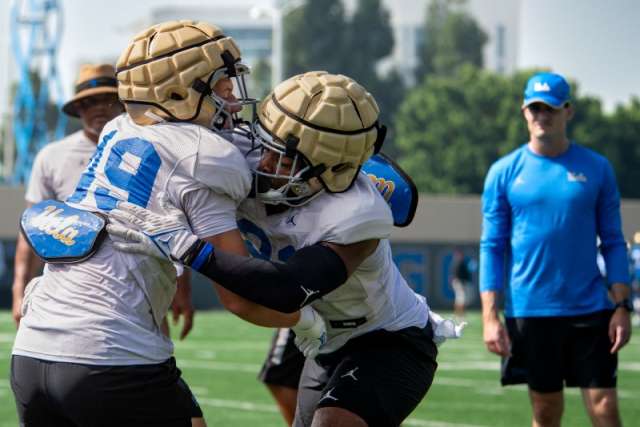As football season ramps up, player safety across the spectrum of the sport, from youth Pee Wee leagues to the pros, remains a significant topic of concern.
Despite the efforts of those involved at every level to improve safety — introducing better equipment and improving techniques on the field — risk of injury in football is unavoidable, said David R. McAllister, MD, chief of UCLA Health Sports Medicine and head team physician for UCLA Athletics.
“There is a big emphasis on trying to make the game of football as safe as possible, but the players — even in the youth leagues — continue to get bigger, stronger and faster,” said Dr. McAllister.
Orthopaedic injuries predominate
Though brain injuries among pro athletes draw media attention, orthopaedic injuries at every level of play are just as much a cause for concern.
“Most of the injuries that occur in football are orthopaedic, and they can range from very severe to less debilitating, such as sprains, contusions or bruising due to contact,” Dr. McAllister said. “The more severe orthopaedic injuries typically involve the shoulder and knee.”
While proper conditioning and strength training are important to limit the potential risk of injury, the possibility of getting hurt still remains. “Data shows that some injury-prevention programs are effective in reducing the incidence of injuries, but other data shows that they really don’t have that much benefit,” Dr. McAllister said. “It’s difficult to make the game 100% safe. There always will be risk.”
Preventing injury becomes more challenging as players get older and grow stronger, Dr. McAllister explained. “When two 10-year-olds collide on the field, they can usually bounce right back up,” he said. “But when they are bigger, in high school and college, those collisions are more violent, and the risk of injury is greater.”
Even though younger children tend to avoid more serious injuries, Dr. McAllister advises parents to talk with their children before allowing them to play tackle football.
“Thankfully, kids seem to be less at risk of severe injuries to their bones and joints,” he said. “But the risk of concussion is still substantial. In that regard, parents should be having conversations with their children because football may not be the appropriate sport for some kids. If the parents are willing and they understand and accept the risk that’s inherent in the game, then I think it’s okay.”
Youth participation is declining
Perhaps due in part to the number of former professional and collegiate players who have publicly stated that, knowing what they know now about the risks, they’d probably not allow their children to play tackle football, there has been steady decline in football participation. The 2021-22 survey by the National Federation of High School Associations indicated that participation had dipped below 1 million participants since the start of the 21st century, with an overall decrease of 10% since 2009-10.
“Football is a great sport, and participants love it,” Dr. McAllister said. “But the risk of injury will always be there.”




